applications of graphic statics
Developed during the second-half of the 19th Century, graphic statics quickly became a method of choice for analyzing stresses inside truss systems. Today, this structural analysis process is better achieved with faster and more comprehensive numerical methods. However, graphic statics remains a tool of choice for early-stage structural design, i.e. when the geometry of the system is not decided yet and is to be explored simultaneously with the load-paths related to it. Moreover, the range of applications of graphic statics has expanded beyond planar trusses and the automation of graphic statics procedures is now easily implemented into computational parametric environments. The application of graphic statics to early-stage design explorations has never been as relevant as today.
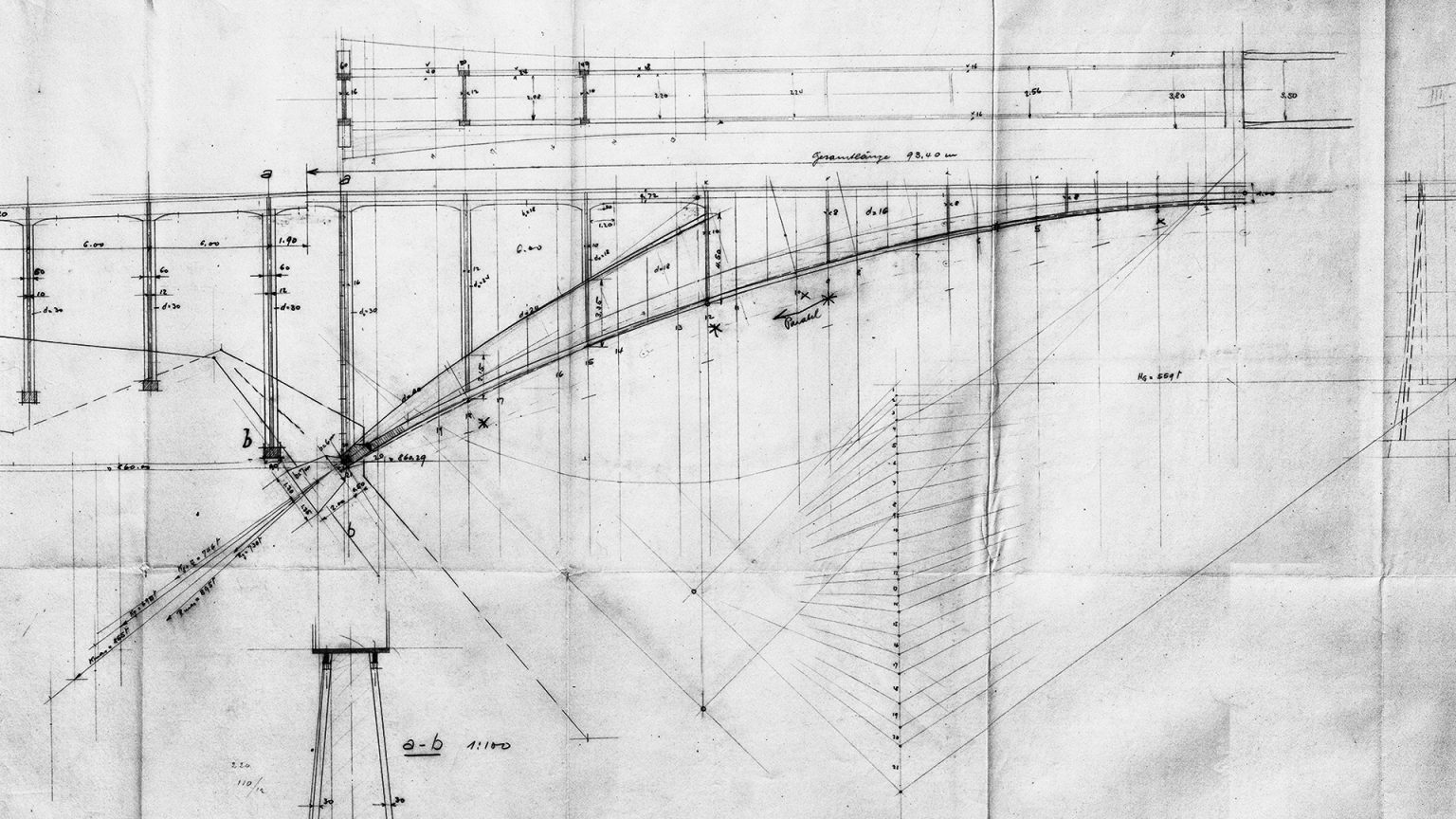
Please note that the publication lists from Infoscience integrated into the EPFL website, lab or people pages are frozen following the launch of the new version of platform. The owners of these pages are invited to recreate their publication list from Infoscience. For any assistance, please consult the Infoscience help or contact support.
Robert Maillart’s Key Methods From the Salginatobel Bridge Design Process (1928)
This paper sheds light on some of the graphical methods used by Robert Maillart to design the Salginatobel Bridge, a three-hinged concrete structure spanning 90 meters. Built in 1929, this masterpiece has since received extensive recognition both for its structural elegance and its efficiency. However investigations into the design process enabling this degree of perfection remain incomplete. Studying Maillart’s original working drawings, this paper reviews the earliest stages chronology of the Salginatobel Bridge design process. It focuses on three methods: the use of graphically controlled parabolas, the minimization of bending moments within the bridge and the geometrical definition of the foundation block. These graphical methods reveal how Maillart simultaneously dealt with geometry and the flow of forces throughout using a straightforward, handy and efficient form-finding process which is still relevant today.
Journal of the International Association for shell and Spatial Structures. 2012. Vol. 53, num. 1, p. 39-47.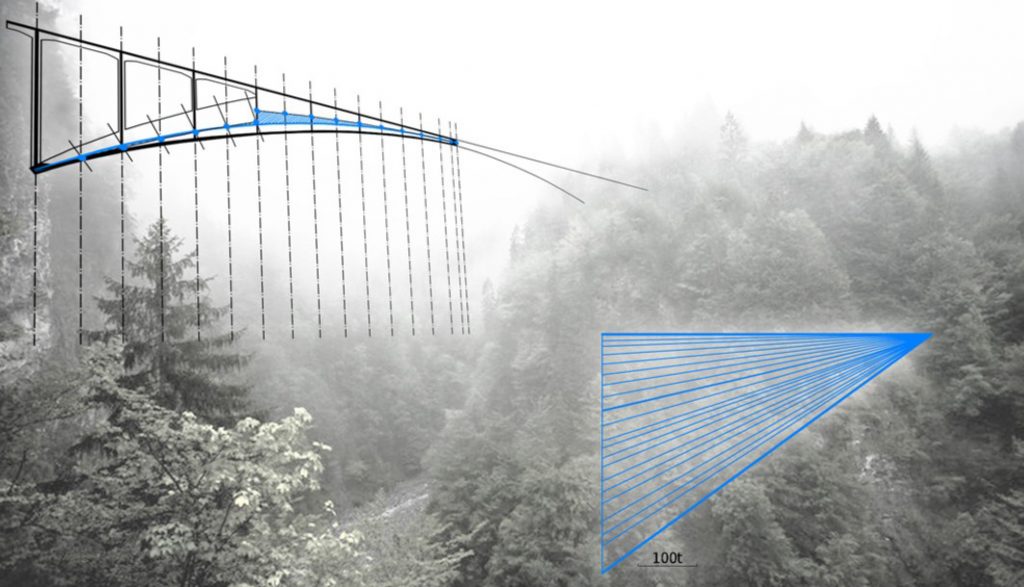
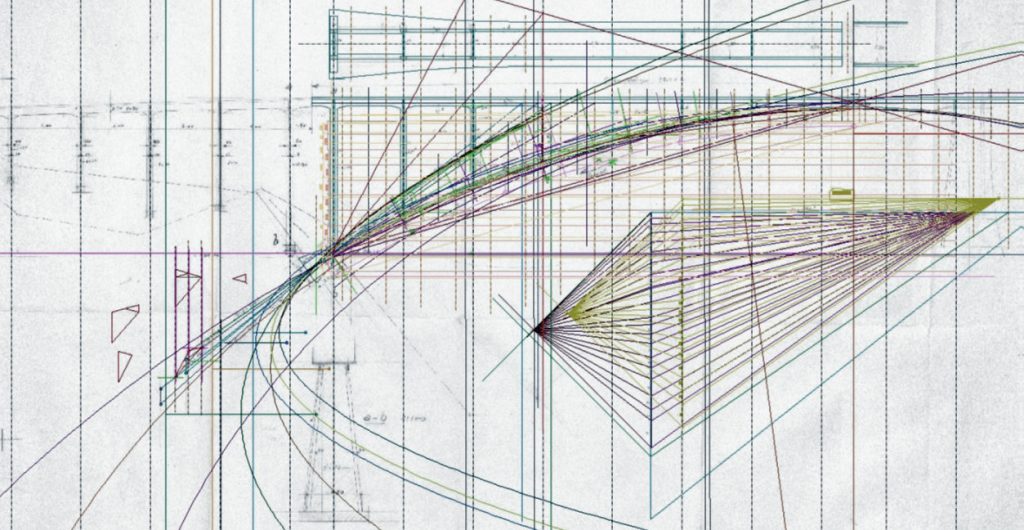
see also:
- Pure geometrical consideration for bridge design in the early 20th century.
ICCH conference 2015 (detailed record) - Load path and prestressing in conceptual design related to Maillart’s Vessy bridge
IASS-SLTE 2014 (detailed record)
Please note that the publication lists from Infoscience integrated into the EPFL website, lab or people pages are frozen following the launch of the new version of platform. The owners of these pages are invited to recreate their publication list from Infoscience. For any assistance, please consult the Infoscience help or contact support.
The Graphic Statics behind the Collier Memorial
This paper reviews the various graphic statics methods applied during the early structural design of the Collier Memorial, Cambridge, MA. Built in 2015 to honor fallen MIT Police Officer Sean Collier, the monument is a vaulted assembly of massive granite blocks. They are held together with pure compression contact when under the action of gravity alone. This non-conventional structural typology has only rare contemporary precedents and its design consequently innovates in various areas. In particular, assumptions of plastic theory and graphic statics have been combined to explore the design space, to assess stability, to study collapse mechanisms and to provide factors of safety related to maximum allowed displacements and maximum allowed live load. These methods proved to be a faster and sounder alternative to conventional discrete-element methods during the conceptual design stage.
2018-07-16. IASS Symposium 2018, MIT, Boston, Massachusetts, USA, July 16-20, 2018.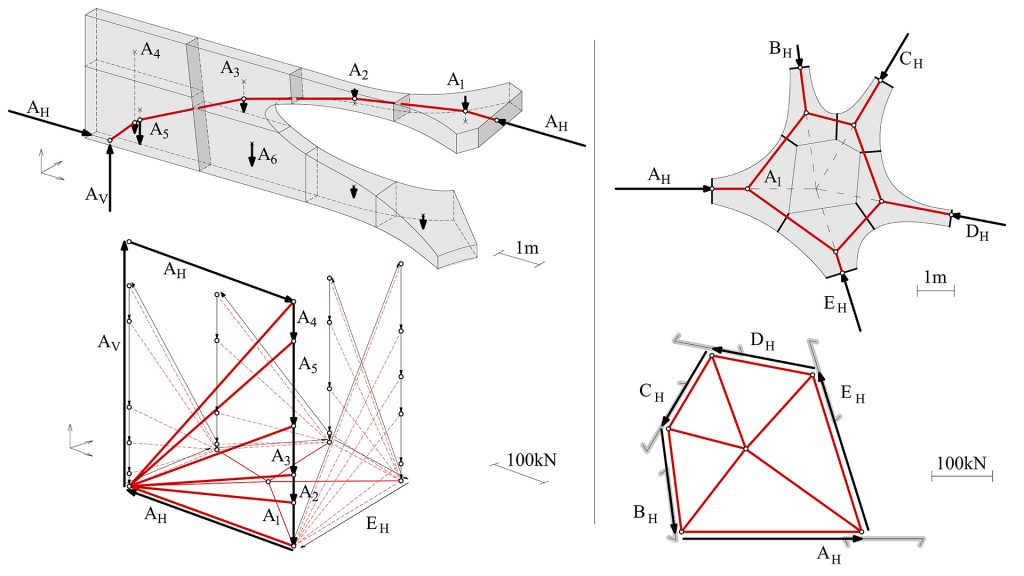
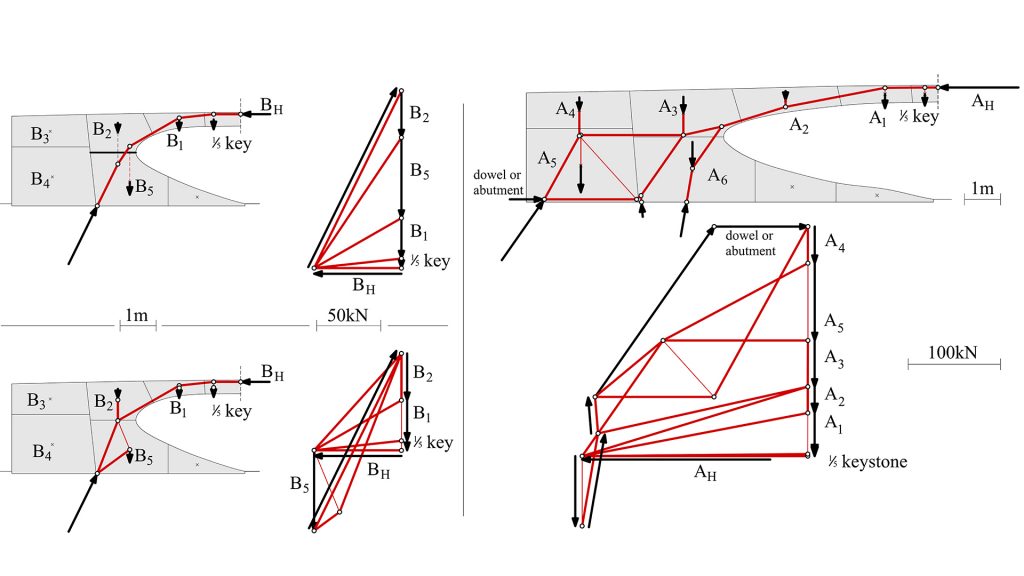
see also:
- Segmentiertes Granitgewölbe in Cambridge / Segmented Granite Vault in Cambridge
Detail Structure 2016 (detailed record)
Please note that the publication lists from Infoscience integrated into the EPFL website, lab or people pages are frozen following the launch of the new version of platform. The owners of these pages are invited to recreate their publication list from Infoscience. For any assistance, please consult the Infoscience help or contact support.
Design and exploration of externally post-tensioned structures using graphic statics
Funicular structures, which follow the shapes of hanging chains, work in pure tension (cables) or pure compression (arches), and offer a materially efficient solution compared to structures that work through bending action. However, the set of geometries that are funicular under common loading conditions is limited. Non-structural design criteria, such as function, program, and aesthetics, often prohibit the selection of purely funicular shapes, resulting in large bending moments and excess material usage. In response to this issue, this paper explores the use of a new design approach that converts non-funicular planar curves into funicular shapes without changing the geometry; instead, funicularity is achieved through the introduction of new loads using external post-tensioning. The methodology is based on graphic statics, and is generalized for any two-dimensional shape. The problem is indeterminate, meaning that a large range of allowable solutions is possible for one initial geometry. Each solution within this range results in different internal force distributions and horizontal reactions. The method has been implemented in an interactive parametric design environment, empowering fast exploration of diverse axial-only solutions. In addition to presenting the approach and tool, this paper provides a series of case studies and numerical comparisons between new post-tensioned structures and classical bending solutions, demonstrating that significant material can be saved without compromising on geometrical requirements
Journal of the International Association for shell and Spatial Structures. 2015. Vol. 56, num. 4, p. 249-258.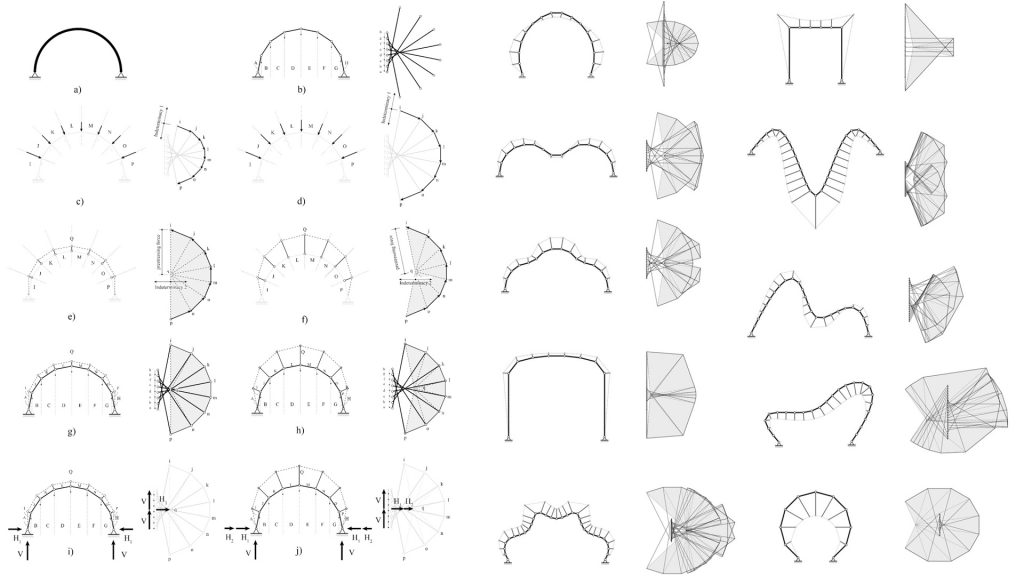
other related publications:
- Guastavino design of the 1909 thin brick dome of the Cathedral of St John the Divine
CHS journal 2017 (detailed record) - Graphic statics and interactive optimization for engineering education
Structures Congress 2015 (detailed record) - Graphical methods for the design of Catalan vaults: the case of Luis Moya Blanco’s Nuestra Señora de la Araucana in Madrid
ICSA conference 2016 (detailed record) - What Maurice Koechlin’s scientific contribution tells about his life (1856-1946)
ICCH conference 2015 (detailed record) - An Optimized Bracing System for Distributed Lateral Loads
ACE conference 2016 (detailed record) - 数字化图解静力学设计方法 — 建筑师和结构工程师共享的设计工具 (Digital Graphic Statics – Shared Design Tools for Architects and Engineers)
Architecture Journal 2017 (detailed record)